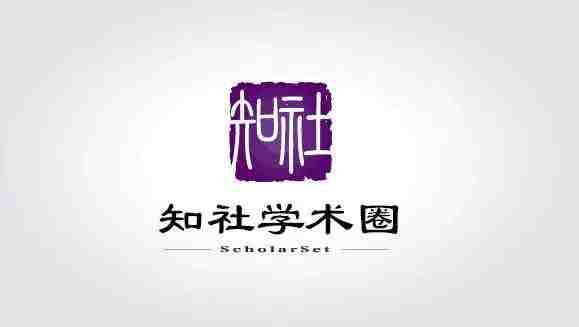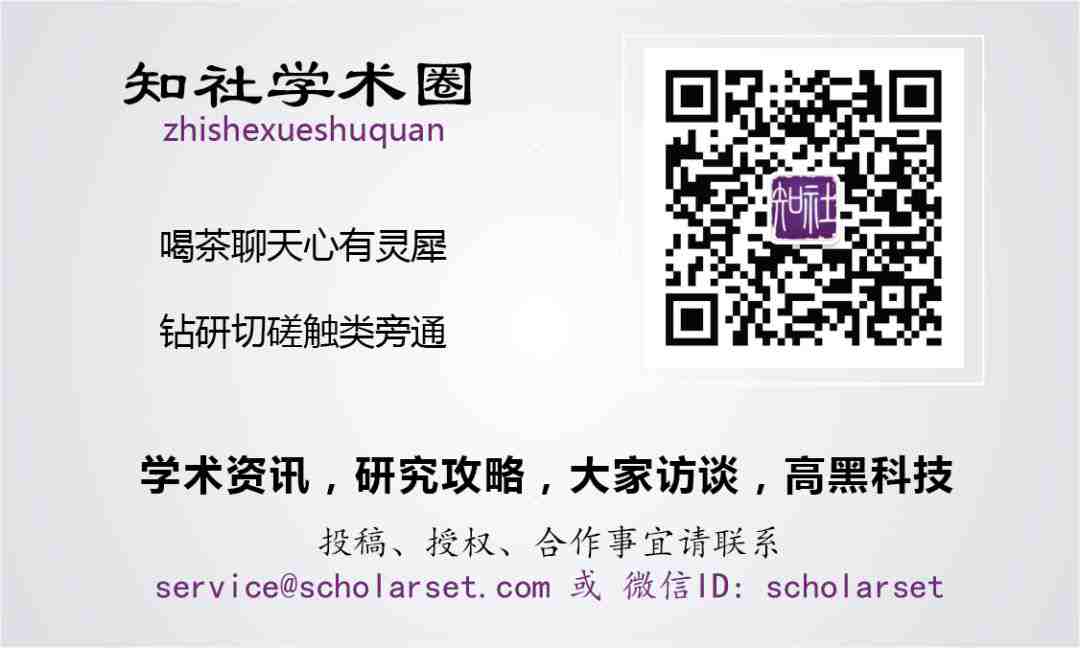麻省理工校长纽约时报社论:中国崛起是美国的机会

海归学者发起的公益学术平台
分享信息,整合资源
交流学术,偶尔风月

2018年8月8日,中国国务院关税税则委员会发布公告,决定对原产于美国约160亿美元进口商品加征关税。这是继之前涉及500亿美元的原产于美国进口商品的增税之后,中国政府对美国提高关税做法的又一次还击。贸易战进入了大众的视角,但中美之间的竞争远不止是贸易关税那么简单。

特朗普政府在指责中国的“不公平贸易行为”以合理化其发动贸易战的动机,并博取国内各界的支持时,启用了针对知识产权保护的“301条款”和针对国家安全的“232条款”,相应观点在美国国内有相当数量的拥护者。由知识产权纠纷而衍生出的层出不穷的华人“间谍案”也对学界和科技人士的心理产生巨大的冲击。中美之间,是否真的难免一战?
8月9日,麻省理工学院校长L. Rafael Reif博士在《纽约时报》发表题为China's Challenge is America's Opportunity的评论文章,就上述问题做了分析,认为“阻止知识产权盗窃和不公平贸易行为”并不能让美国轻易重回创新的绝对优势地位,对人才政策和产业政策的得失进行了反思。他认为,中国崛起的挑战,对于美国而言,其实是一个机会,需要以远见和智慧去面对!
美中在国际贸易方面的紧张局面,部分源于美国担心中国给予本国企业税收优惠,以促进出口,限制进入中国市场,迫使外国企业将技术转让给中国企业,窃取知识产权,以及从事工业间谍活动。
为了阻止这些做法,需要采取专业的决定性行动,以维护公平国际竞争和美国的战略与商业利益。但是,如果认为靠咄咄逼人的防御措施就能够在一定程度上阻止中国的技术成功——或者确保美国自己的技术成功,那就错了。
中国并不是一个主要通过抄袭他人想法,并以低成本快速生产来实现繁荣的创新失败者。它正在科技关键领域积极进取,努力取得领先地位。
在量子计算方面,中国的阿里巴巴正在与谷歌争夺实现“量子霸主”的技术里程碑。在5G技术方面,全球三大巨头分别是芬兰的诺基亚、瑞典的爱立信和中国的华为,后者在研发方面的支出超过两个竞争对手的两倍半。中国设计和建造的“复兴号”在世界日常运行的高铁中速度是最快的。
中国在移动支付、面部识别和语音识别等领域也居于世界领先地位,中国企业充分利用了他们的先进算法,以及在规模和数据访问方面的优势。中国还在生物技术和外层空间等重要研究领域进行大胆的国家投资,并直接支持初创企业,招聘来自世界各地的人才。中国拥有无与伦比的能力,能够迅速推动先进技术产品的大规模生产,并迅速将创新推向市场。
简而言之,阻止知识产权盗窃和不公平的贸易行为——即使是完全有效的——也不能让美国轻而易举地回到无可置疑的创新领导地位。除非美国紧急地小心应对这一挑战的规模和强度,否则我们可以预见,在个人通信,乃至商业、健康和安全等领域,不出十年,中国很可能成为世界上最先进的科技国家,以及最先进科技产品的来源。
但中国的技术优势并非不可避免。美国拥有巨大的资产,包括我们科技部门的巨大全球实力。这在一定程度上取决于一个其他国家无法复制的独特公式:大量一流的美国大学在联邦政府的长期支持下,进行高级研究。这种关系植根于一种机会和企业家精神的民族文化,受到知识自由氛围的激励,有法治的支持,并且,最重要的是,通过团结来自社会各个领域和世界每个角落的优秀人才,将创新推向新的高度。几十年来,这些因素使我们的国家成为地球上最强大的科技引擎。
所有美国人都可以为这个独特的制度感到自豪。但其卓越性并不是自动产生的。
虽然中国正在迅速推进一项名为“中国制造2025”的统一战略,成为制造业和技术领域的世界领导者,但美国并没有将技术优势作为广泛的国家关注焦点。如果我们想要继续保持世界上技术最先进的国家,或最先进的国家之一的地位,就应该加倍发挥我们的优势,使得这一愿景成为现实。
例如,为了利用美国一流的人工智能研究人才,我们需要一种有助于建立美国纳米技术实力的长期规划:一个稳定的、有针对性的、持续多年的资助战略,协调多个联邦机构的投资。白宫最近成立了人工智能专门委员会,这个良好的第一步应当成为知识前沿激进竞争的开始。量子计算也是如此;目前国会为支持先进研究的适度努力应当更大、更快、更雄心勃勃。
我们还需要重新审视行业-大学-政府这一合作伙伴关系作为早期研究领域战略合作投资的机制。在1980年代,这种努力虽然远非完美,却帮助美国的半导体产业得以生存和发展。我们需要扬长避短,以同样的精神在这三个部门之间展开积极合作,令我们的整个创新体系更快、更有效,让美国产生的创意首先进入美国市场。
与此同时,政府、企业、大专院校应该大胆培养本土人才,不分年龄,不分社区。《军人安置法案》的持久效益和美国对苏联人造卫星的回应,使得几十年来美国人成为地球上受过最好教育的人群,我们可以再做一次。
最后,我们应该确保我们的移民系统欢迎来自世界各地的最优秀的人才,以便渴望机会的人们继续将美国视为他们获得教育的最佳场所,以及生活和工作的最佳场所,也令美国能够从他们的创造力和干劲中获益。
培养这些资产,也将为美国在制止不公平商业和市场行为的谈判中提供一定优势。
作为一个国家,美国需要将重点从仅仅对中国的行动做出反应,转变为建立一个有远见的国家战略,以保持美国在科学和创新方面的领导地位。如果我们对中国的雄心壮志所做的一切不过是把我们所有的大门加上双重大锁,我相信那只会把我们禁锢在平庸之中。但如果我们美国人尊重中国,把它视为一个新兴竞争者,有着许多我们可以借鉴的优点,这种观点将激励美国做到无与伦比地最好。

MIT Prisident L. Rafael Reif
China’s Challenge Is America’s Opportunity
American tensions with China over international trade spring partly from concerns that China gives tax breaks toits companies to boost their exports, restricts access to its markets, forces foreign companies to transfer their technology to Chinese companies, steals intellectual property and pursues industrial espionage.
Expert, decisive action is needed to stop these practices in defense of fair international competition and America’s strategic and commercial interests. But it would be a mistake to think that anaggressive defense alone will somehow prevent China’s technological success —or ensure America’s own.
China is not an innovation also-ran that prospers mainly by copying other people’s ideas and producing them quickly at low cost. The country is advancing aggressively to assert technological supremacy in critical fields of science and technology.
In quantum computing, China’s Alibaba isbattling Google to achieve the technical milestone of “quantum supremacy.” In 5G technology, the three largest global players are Nokia of Finland, Ericsson ofSweden — and Huawei of China, which is spending more than two and a half times as much on research and development as its two rivals. The Fuxing bullet train, designed and built in China, is the world’s fastest in regular operation.
China is also a world leader in fields like mobile payment and facial and spoken language recognition, where Chinese companies have made the most of their advanced algorithms and their advantages in scale and data access. It is also making bold national investments in key areas of research like biotechnology and space, and directly supporting start-ups and recruiting talent from around the world. And China has unrivaled capacity to rapidly ramp up large-scale production of advanced technology products and quickly bring innovation to market.
In short, stopping intellectual property theft and unfair trade practices — even if fully effective — would not allow the United States to relax back into a position of unquestioned innovation leadership. Unless America responds urgently and deliberately to the scale and intensity of this challenge, we should expect that, in fields from personal communications to business, health and security, China is likely to become the world’s most advanced technological nation and the source of the most cutting-edge technological products in not much more than a decade.
But China’s technological dominance is not inevitable. The United States has tremendous assets, including the immense global strength of our technology sector. This partly depends on a unique formula noother country has been able to copy: the large number of first-rate American universities pursuing advanced research with long-term federal support. This relationship is rooted in a national culture of opportunity and entrepreneurship, inspired by an atmosphere of intellectual freedom, supported by the rule of law and, crucially, pushed to new creative heights by uniting brilliant talent from every sector of our society and every corner of the world. For decades, these factors have helped make our nation the most powerful scientific and technological engine on Earth.
Every American can take pride in this distinctive system. But there is nothing automatic about its excellence.
While China is moving forward rapidly with a unified strategy called Made in China 2025 to become the world leader in manufacturing and technology, the United States has not made technological pre-eminence a matter of broad national focus. If we want to remain the most, or one of the most, technologically advanced nations in the world, we should double down on our strengths and make that vision real.
For instance, to capitalize on the superb American pool of artificial intelligence research talent, we need the kind oflong-range planning that helped build United States strength in nanotechnology: a stable, targeted, multiyear funding strategy that coordinates the investments of multiple federal agencies.
The White House recently created a select committee on artificial intelligence; this good first step needs to be the start of an aggressive race to the frontier of knowledge. The same is true in quantum computing; a modest effort being floated in Congress to support advanced research should be larger, faster and more ambitious.
We also need to take a fresh look at industry-university-government partnerships as mechanisms for strategic co-investment in early-stage research. In the 1980s, such efforts, though far from perfect, helped the American semiconductor industry survive and thrive. Stressing what worked and discarding what didn’t, we need to collaborate actively across those three sectors in the same spirit now to make our entire innovation system faster and more effective, so ideas generated in the United States get to market in the United States first.
编者简评
贸易政策与产业政策的关联,从国际贸易的比较优势理论发展之初就已现端倪,到2008年诺贝尔经济学奖获得者保罗克鲁格曼的国家战略贸易政策更是得到了充分的应用。战略贸易政策,实质上是塑造产业国际竞争优势的政策,而其实施又与创新能力无法分割。就推动国家竞争力而言,中美的目标并无二致。Reif博士这篇,是少有清晰地描述了中国的优势产业和其形成机制的文章。他山之石可以攻玉,以竞争对手为鉴,变挑战为机遇,上策!人才-科研-创新,这三位一体的社会发展和国家竞争力驱动轮,值此贸易政策针锋相对之际,更需重视。
注:L. Rafael Reif是麻省理工学院校长。
来源:New York Times; 纽约时报中文网
媒体转载联系授权请看下方

最新评论
推荐文章
作者最新文章
你可能感兴趣的文章
Copyright Disclaimer: The copyright of contents (including texts, images, videos and audios) posted above belong to the User who shared or the third-party website which the User shared from. If you found your copyright have been infringed, please send a DMCA takedown notice to [email protected]. For more detail of the source, please click on the button "Read Original Post" below. For other communications, please send to [email protected].
版权声明:以上内容为用户推荐收藏至CareerEngine平台,其内容(含文字、图片、视频、音频等)及知识版权均属用户或用户转发自的第三方网站,如涉嫌侵权,请通知[email protected]进行信息删除。如需查看信息来源,请点击“查看原文”。如需洽谈其它事宜,请联系[email protected]。
版权声明:以上内容为用户推荐收藏至CareerEngine平台,其内容(含文字、图片、视频、音频等)及知识版权均属用户或用户转发自的第三方网站,如涉嫌侵权,请通知[email protected]进行信息删除。如需查看信息来源,请点击“查看原文”。如需洽谈其它事宜,请联系[email protected]。